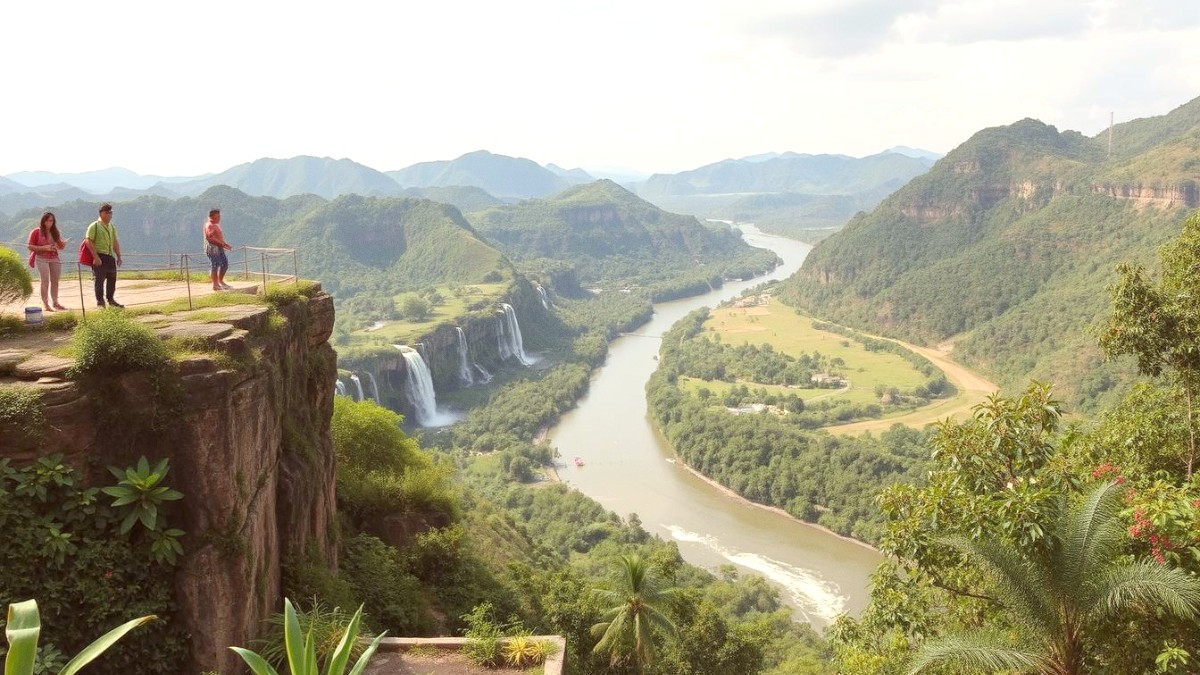
Southern Laos, Laos
Wat Phou Champasak: This UNESCO World Heritage site is a ruined Khmer Hindu temple complex with a history predating Angkor Wat. Its historical significance and architectural beauty make it a visit for many. It can be a half-day or full-day trip.
Bolaven Plateau Waterfalls & Coffee Plantations: The Bolaven Plateau is known for its cool climate, fertile volcanic soil, and numerous spectacular waterfalls, along with high-quality coffee farms. A "mini-loop" day trip allows visiting several major waterfalls and a coffee plantation.
Consider your travel style when planning day trips.
Organized tours come with a fixed itinerary and often an English-speaking guide. They are good for those uncomfortable with self-driving or who prefer a structured experience, allowing you to relax and enjoy the sights.
Independent travel offers the most freedom. You set your own pace, linger at favorite spots, and make spontaneous stops. It can be cheaper for groups (when hiring a tuk-tuk) or solo travelers (when renting a motorbike).
Southern Laos is a haven for natural beauty, with lush landscapes and powerful waterfalls.
This large protected area covers much of the Bolaven Plateau. Its natural beauty is experienced through visits to waterfalls, coffee farms, and forest treks.
The lush, rolling hills of the Bolaven Plateau, with its distinctive red soil, extensive coffee plants, and powerful waterfalls, offer stunning scenic views.
The vast expanse of the Mekong River, especially in the Si Phan Don region, with its countless islands and tranquil waters, creates an unique and serene landscape.
The Bolaven Plateau is home to many waterfalls, from gentle cascades to roaring torrents. Forest areas invite exploration.
Areas around Pakse feature flat rice paddies, small traditional villages, and agricultural landscapes.
Deepen your understanding of Lao culture through visits to historical sites and local communities.
Wat Phou Champasak is the main historical site in the region outside of Pakse city itself, with ancient Khmer heritage.
On the Bolaven Plateau, some tours visit villages of ethnic groups like Laven, Alak, or Katu. These visits provide insights into traditional life, houses, weaving, and coffee cultivation.
Wat Phou Champasak holds deep religious significance, serving as a pilgrimage site for devotees from Laos and neighboring countries.
Many local temples in Pakse also function as important spiritual centers for the community, offering insights into Buddhist architecture and local life.
Visiting a working coffee farm on the Bolaven Plateau is a significant experience. Learn about the history of coffee in Laos, observe the cultivation process, and taste freshly brewed local coffee.
Discover the origins and development of coffee cultivation in Laos, a major cash crop for the region.
Observe the various stages from bean to brew, including planting, harvesting, and processing coffee beans.
Sample different varieties of freshly brewed local coffee, appreciating the unique flavors of the Bolaven Plateau.
Extend your southern Laos adventure with these multi-day itineraries, connecting Pakse to other regional highlights.
Spend 2-3 nights on Don Det or Don Khon for a relaxed atmosphere, cycling, waterfall visits, kayaking, or unwinding by the river.
Dedicate 2-4 days to a full motorbike loop for in-depth exploration, visiting more waterfalls and coffee farms, with overnight stays.
For those with extra time, consider venturing into more remote areas or off-the-beaten-path experiences for immersion.
A self-contained loop starting and ending in Pakse: Bolaven Plateau (2-3 days), Si Phan Don (2-3 days), Champasak (1 day for Wat Phou). Approximately 5-7 days.
For a comprehensive Laos experience, start in Luang Prabang, move south through Vang Vieng, Vientiane, Savannakhet, Thakhek (for the Thakhek Loop), ending in Pakse and Si Phan Don. This route takes 2-3 weeks.
Integrate your journey with neighboring countries like Thailand, Cambodia, or Vietnam for a broader Southeast Asia experience.